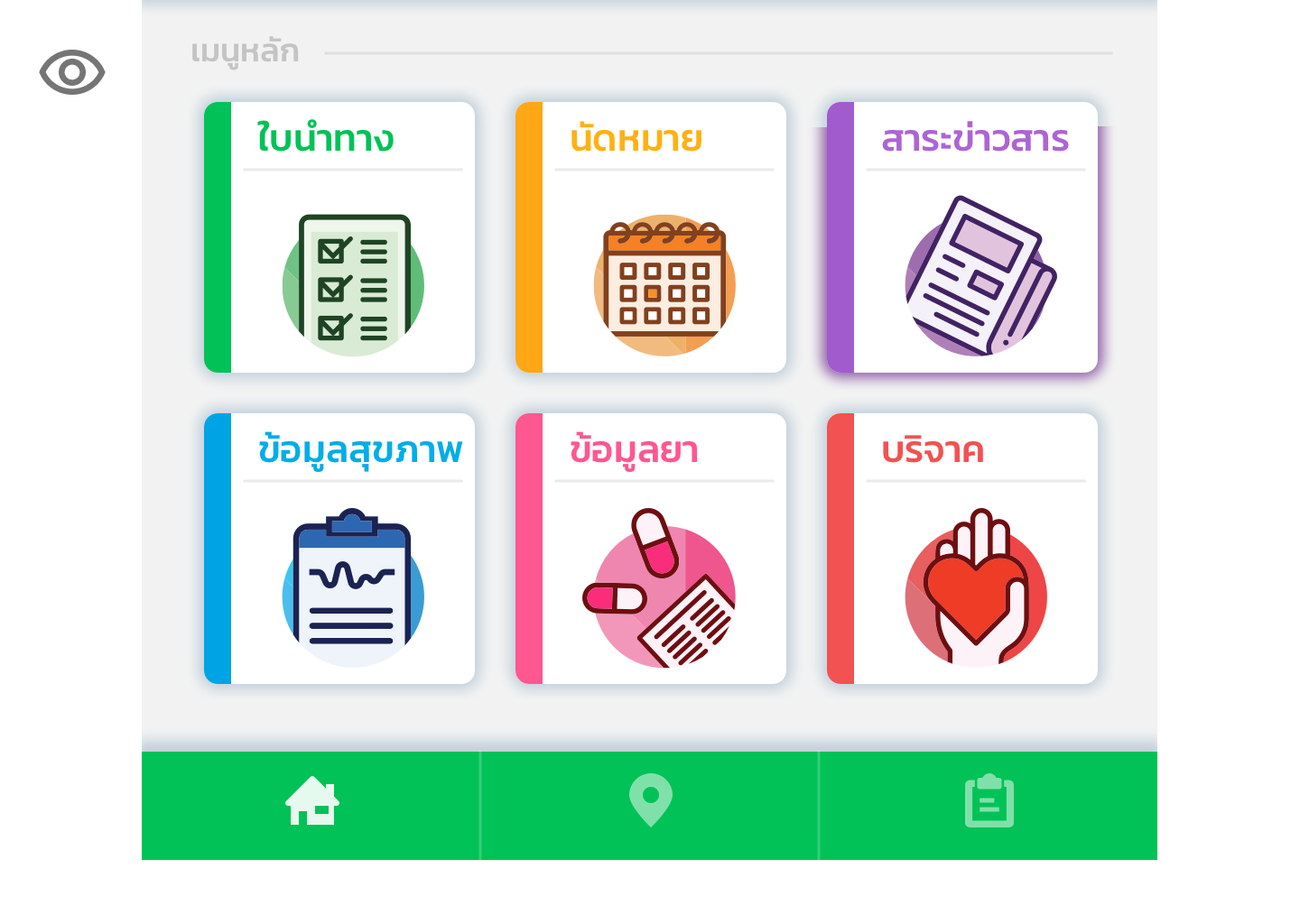Case Study:
Chula Care
Total Healthcare Solution
King Chulalongkorn Memorial Hospital & Kasikornbank
Client
2018
Date
Solution
Mobile Application
Role
Lead UX/UI Designer
Design Team
8 Designers
The Challenge
King Chulalongkorn Memorial Hospital, a prominent public healthcare facility in Thailand, has earned a distinguished reputation for its exemplary services. This case study explores the hospital's operational dynamics, particularly the noteworthy challenge of accommodating a daily influx of 5,500 to 6,000 outpatients. Notably, this high volume has resulted in an approximate waiting time range of 3 to 6 hours. By examining the intricacies of this scenario, we aim to explore potential solutions, enhance outpatient management strategies, and contribute valuable insights to the broader healthcare community.
The Discovery
We are outlining a structured approach to conducting user research for this project. Each group we are planning to interview serves a specific purpose in understanding different aspects of the problem and potential solutions.
Stakeholder Interview:
Hospital Board of Directors
Objective
Gain a comprehensive understanding of the project's objectives, anticipated outcomes, and key performance indicators as envisioned by the hospital's leadership.
Frontline Staff Interview:
Nurses
Objective
Obtain insights into the daily operational challenges encountered by frontline nursing staff, with a focus on identifying areas for optimization and improvement.
User Interview:
Outpatient
Objective
Gain insights into the firsthand experiences of patients within the hospital setting, focusing on their perspectives, challenges, and recommendations for enhancing the overall patient experience.
The Insight
Hospital Board of Directors
The project aims to enhance various facets of hospital operations and patient care. The board seeks outcomes centered on heightened efficiency, better patient outcomes, and elevated patient satisfaction levels. Success will be gauged using metrics like decreased wait times, enhanced patient feedback scores, and augmented revenue streams. However, constraints such as budgetary restrictions, regulatory obligations, and existing infrastructure limitations may pose challenges during implementation.
Nurses
Frontline nurses encounter a multitude of challenges in their daily duties, including heavy workloads, frequent interruptions, and insufficient resources. These challenges are exacerbated by workflow inefficiencies, such as redundant paperwork and manual data entry, which not only contribute to staff frustration but also diminish productivity levels. To address these issues effectively, nurses emphasize the importance of establishing improved communication channels, streamlining processes, and securing additional support. Proposed solutions for enhancement encompass the implementation of technological tools for task automation, the provision of supplementary training or staffing resources, and the optimization of workflow procedures to foster greater efficiency and effectiveness in their roles.
Outpatient
Patients value friendly and attentive staff but are frustrated by long wait times and unclear communication regarding appointments. Effective communication during appointments, including information about treatment plans and medications, is essential to them. Navigating the hospital proves challenging due to chaotic directories amid ongoing construction. To address these issues, suggestions include reducing wait times, improving communication through clear signage and staff-patient interactions, and providing educational materials to empower patients in managing their health.
The Solution
Online Queue System
The application aims to address insights gathered from stakeholders, frontline staff, and patients to enhance the hospital experience. It features a comprehensive queue system that prioritizes efficient patient flow, taking into account insights about long wait times and the need for increased efficiency. Patients receive clear instructions on what steps to take next between medical treatments, addressing concerns about unclear communication during appointments.
Navigation System
Navigation within the hospital is simplified for both typical visitors and those with mobility impairments. The app provides detailed and accessible directions using beacon technology, accommodating insights about challenges navigating due to chaotic directories and ongoing construction. Additionally, special features cater to individuals on wheelchairs, ensuring seamless movement throughout the facility.
Medical Management
For medication management, the application offers a user-friendly interface displaying detailed information about prescribed medicines, complete with images for easy identification. This addresses concerns from patients about understanding their treatment plans and medications. Moreover, the app facilitates easy payment processes for medical bills, aligning with insights about enhancing overall patient satisfaction and experience.
Dual Accessibility
The application not only provides these features through a mobile interface but also offers accessibility via an onsite kiosk within the hospital premises. This dual accessibility approach ensures that individuals can utilize the application's features whether they prefer to use their device or opt for the onsite kiosk. It enhances flexibility and convenience for users, catering to diverse preferences and needs. Additionally, the kiosk interface maintains the same user-friendly design principles, featuring an intuitive layout and easily understandable icons, ensuring accessibility for all users, regardless of their technological proficiency or visual capabilities.
Pre-launch
Before its official launch, this application will undergo a pre-launch phase within a small outpatient clinic of the hospital. This phase aims to gather user feedback and address any issues or suggestions before scaling up to other departments. By testing the application within a controlled environment, the development team can fine-tune its features and ensure that it meets the needs and expectations of users. This approach allows for a smoother transition to broader implementation across additional departments within the hospital.
The Icon Menu
The application's icon menu is thoughtfully crafted with highly illustrative icons that are larger than standard, catering to users who may struggle with reading text or have impaired vision. This design choice ensures accessibility for all patients, irrespective of their language proficiency or visual impairments, aligning with feedback from stakeholders, frontline staff, and patients. Each icon in the menu is assigned a distinct color, facilitating easy navigation and enhancing user experience.









